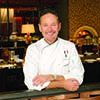What’s cooking on the North American culinary scene for groups? Sustainability and healthy options are here to stay, while traditional sit-down dining is taking a back seat to experiential-driven eating.
From Oregon to Ontario, here is a coast-to-coast view of trends shaping the North American F&B landscape for groups.
 Rebecca Mackenzie, President & CEO, Culinary Tourism Alliance, Toronto
Rebecca Mackenzie, President & CEO, Culinary Tourism Alliance, Toronto
www.ontarioculinary.com
Developing consumer awareness of food tourism experiences around the Canadian province since 2011, the Ontario Culinary Tourism Alliance is now the Culinary Tourism Alliance (CTA), helping destinations across the globe to grow their food tourism offerings. CTA’s proprietary Experience Assessment Tool, which geo-maps and geo-tags businesses along the Food Tourism Value chain, allows destinations to determine their market-readiness relative to delivering a “taste of place” experience.
Staying current with trends through participation in the UNWTO Gastronomic Network and other means, Rebecca Mackenzie, who has led the nonprofit CTA since inception, sees several leading trends.
“Food tours will remain an area of interest for meeting and convention groups as it relates to companion programming and small teambuilding activities,” she said. “Growing in interest are food markets [more prepared foods than a farmers market] and craft beer and spirit tours. Local ingredients on meetings and conventions menus will grow, as destinations aim to add a point of interest and economic impact to their footprint.”
Recent CTA research in partnership with Ryerson University found a compelling case for F&B tasting, tour and takeaway opportunities.
“When choosing a destination, 43 percent of respondents look for guided culinary tours,” Mackenzie said. “For culinary activities, 81 percent want to be able to try locally sourced products, while for 67 percent, it is important to have take-home products.”
Delivering a great taste of place experience can further ensure that delegates become ambassadors of a destination and are likelier to return, she added.
 Stephan Pyles, Celebrity Chef, Cookbook Author, Entrepreneur, Philanthropist and Educator, Dallas
Stephan Pyles, Celebrity Chef, Cookbook Author, Entrepreneur, Philanthropist and Educator, Dallas
One of the founding fathers of Southwestern cuisine in the 1980s and a pioneering force behind New American cuisine, Stephan Pyles is a true culinary trendsetter. Over the last 30 years, the fifth-generation Texan has opened 22 restaurants in five cities, including his base of Dallas. In partnership with Woodlands, Texas-based Benchmark, a global hospitality company, Pyles is now leading a far-reaching initiative focused on culinary innovation at Benchmark’s 70 luxury properties under its Benchmark Resorts & Hotels and Gemstone Collection brands.
“The scope of this new initiative is international and must address a growing variety of consumer demands,” Pyles stated in a release. “Our guests are far more conscious of wellness, environmental issues, animal welfare and the origins of the food they consume.”
He also noted that “hoteliers must meet a clear demand for quality and innovation on every level, from a corporate event to room service.”
Words to the wise, along with other trends.
“Regional American cooking, emphasizing the local, seasonal and organic, will continue to be important,” Pyles said. “Pride in American products from a generation ago created strong interest in regional local spirits and the ‘craft cocktail’ phenomenon, trends that show no sign of dissipating anytime soon.”
With globalization, however, Pyles added that international influences such as the ever-growing Hispanic and Asian populations in the U.S. will also be key.
“Bold flavors, chiles and wood-fired kitchens have awakened consumers’ palates and will become more common,” he said. “There is no turning back to bland or ordinary.”
Pyles holds true to a dominant trend nowadays that he anticipated and has been fashioning now for three decades—execute a unique experience through dining.
“It’s given that the food, cocktails and wine list have to be superior,” Pyles said. “The design, ambiance and service should be, too. Arriving diners should immediately feel an energy that promises delivery of an exclusive experience, with the decor, lighting, music, servers’ apparel and kitchen smells all part of the DNA.”
PageBreak
 John Doherty, Chef-Owner, Black Barn Restaurant, New York
John Doherty, Chef-Owner, Black Barn Restaurant, New York
www.blackbarnrestaurant.com
Joining the Waldorf Astoria New York at 19 and becoming its youngest-ever executive chef at 27, John Doherty oversaw the fabled hotel’s F&B operation for 20 years, including three restaurants, service for 1,647 rooms and banqueting and catering. In 2015, he left to open Black Barn, his farm-inspired concept on Manhattan’s restaurant-rich Madison Park, where the past informs his present approach.
“At the Waldorf, we believed that constantly changing and evolving our menus and presentations was required to get guests to return,” Doherty said. “From coffee breaks to dinners, we continually customized, recreated and grew our menu.”
Doherty carried this model over to Black Barn’s menu and rustic design.
“Demand today for experiential meetings and events is such that the three-course lunch or dinner is no longer the standard,” he said. “Accordingly, we look to deliver an extraordinary experience to sustain demand for our product.”
Concepts include Suddenly Sous Chef, where a guest from each table is selected to plate up in the open kitchen; the souffle experience, where guests make a souffle for the dinner; and sommelier competitions at receptions.
Black Barn offers four private event spaces accommodating 12 to 100 guests, plus a 20-seat Chef’s Table and dining room for 160 seated guests or 250 reception-style.
“Competition drives NYC operators to consistently create uniquely inventive dining options,” Doherty said. “Traditionally best suited to accommodate groups with great service and dining options, hotels are also changing, limiting their food and beverage options, and in some cases promoting unique off-site dining options to groups as a selling tool.”
One constant endures, however.
“Always learn the needs of the planner and collaborate with them to exceed that expectation,” Doherty said.
 Trevor Lui, Director of Operations & Sustainability, The International Centre, Mississauga, Ontario
Trevor Lui, Director of Operations & Sustainability, The International Centre, Mississauga, Ontario
www.internationalcentre.com
An inveterate foodie with three event-servicing Toronto restaurants—Kanpai Snack Bar (Taiwanese night market-style), La Brea (“MexicAsian”) and Yatai (Japanese street food)—Trevor Lui’s all-encompassing passion for developing and managing events at one of Canada’s largest and busiest group venues includes sustainable sourcing and transformative F&B experiences. His market insight is as informed as it is unequivocal.
“Dying or dead is the traditional three- to four-course meal, both from standard restaurant dining and in many traditional event settings,” Lui said. “Dining is not impervious to a generation driven by convenience, real-time results and quick hits of information. People value experimentation, choice and interactive socialism.”
Serving as chair and global trustee of the MPI Canadian Foundation Council Board for the past two years, Lui has always supported “better consideration” for F&B programming.
“Not only is it a significant budget line, but it fuels long, demanding days and social interaction, both key components of the attendee experience,” he said. “Everyone looks forward to meal time, so both the fiscal and creative thought process goes a long way.”
Lui is particularly focused on meal planning in two areas.
“The first is education and readily available content on health and nutrition,” he said. “The second is addressing the increasing issue of food waste relative to events and closing that gap in correspondence with food poverty. Shifting our practices could help address these issues.”







